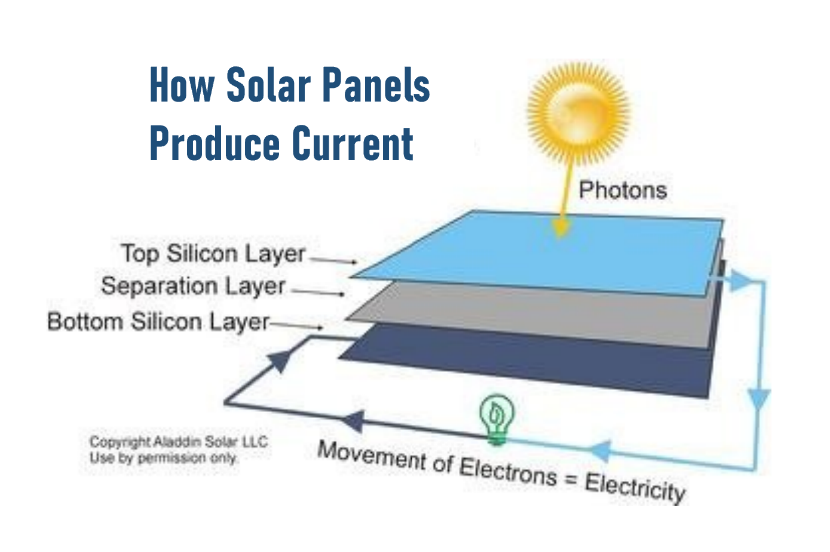You can think of solar inverters as the unsung heroes of any solar energy system.
While everyone focuses on solar panels and their amazing ability to convert sunlight into energy, the power they produce isn't actually compatible with our home appliances.
So, before you can run your home with solar energy, it has to be converted into a usable form.
And that, my friends, is where solar inverters come into play.
Converting sunlight into energy
The basic way solar panels work is pretty simple. When sunlight hits them, electrons on the top side get channeled through a wire to the bottom side and, presto, an electrical current is created.

That makes the electricity produced by your panels DC (direct current) since it only travels through the wires in one direction.
Our appliances, on the other hand, run on AC (alternating current), meaning they need electricity that rapidly switches directions—60 times every second in the US.
That's why, from their inception, solar panels have always needed inverters.
At its most basic level, an inverter is just a device that converts the DC output of solar panels into the AC power we need to run our homes. Every inverter also has a maximum amount of DC current it can handle at any given time.
They come in two types:
• Sometimes a single high-capacity string inverter is used. Larger rooftop systems may require two or more string inverters.
• Alternatively, each panel can instead be paired with its own small-capacity microinverter.
Size is really the only thing that distinguishes string and micro-inverters, and both types function in the same way. So using, say, two 3,000-watt string inverters is functionally identical to using sixty 100-watt microinverters.
Smart inverters
In the early days of solar power, converting DC current into usable AC current was the only thing inverters did.
But, just like phones and other appliances, today's smart inverters are built with computer circuitry that vastly increases their functionality.
Besides converting current to AC, smart Inverters can also rapidly communicate with the local distribution network that makes up your part of the grid.
This allows the flow of surplus energy your system sends back into the grid to be safely regulated, just like electricity generated at a power plant.
In essence, smart inverters give your local distribution network control over the electricity you send back to your utility company to make sure that the grid isn’t damaged.
Your solar system can then become a mini power station that generates surplus power for you to sell back to your utility as well as the energy you need to run your home.